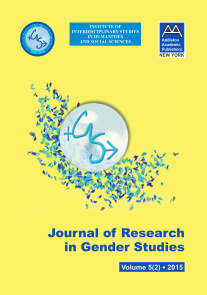REMAPPING TSCHAIKOVSKY’S SWAN LAKE
AS A GOTHIC FEMINIST TALE
REMAPPING TSCHAIKOVSKY’S SWAN LAKE
AS A GOTHIC FEMINIST TALE
Author(s): Barbara NelsonSubject(s): Social Sciences
Published by: Addleton Academic Publishers
Keywords: gothic feminism; ballet; film studies; family romance; revisionist texts
Summary/Abstract: The following paper examines Darren Aronofsky’s Black Swan through the lens of Diane Hoeveler’s Gothic Feminism. The latter work underscores a sociohistorical reading of the gothic genre, in addition to the psychological theme of the doubleganger which has been so widely discussed. The female gothic, according to Hoeveler, represents “a reaction to the eighteenth- and nineteenth-century shift from a libertine, aristocratic society to bourgeois middle-class in which females are given a prominent role in the domestic sphere, as well as in the literary marketplace” (215). In this context, Nina Sayer, the central focus of the Aronofsky’s film, as the rising star of the New York City Ballet continues the work of her female gothic predecessors of “making the world safe for the female middle-class.” Typical of gothic tales, this one deals with desires and fears, in this case, sexual fears of professional compromise and female replicability. In carrying out this mission, Nina reconstitutes the family and “reasserts her inheritance in a female-coded tradition.” In the process she transforms Tschaikovsky’s Swan Lake and enriches readings of the film as either a male fantasy or a tale of female breakdown. pp. 85–92
Journal: Journal of Research in Gender Studies
- Issue Year: 5/2015
- Issue No: 2
- Page Range: 85-92
- Page Count: 8
- Language: English
- Content File-PDF

